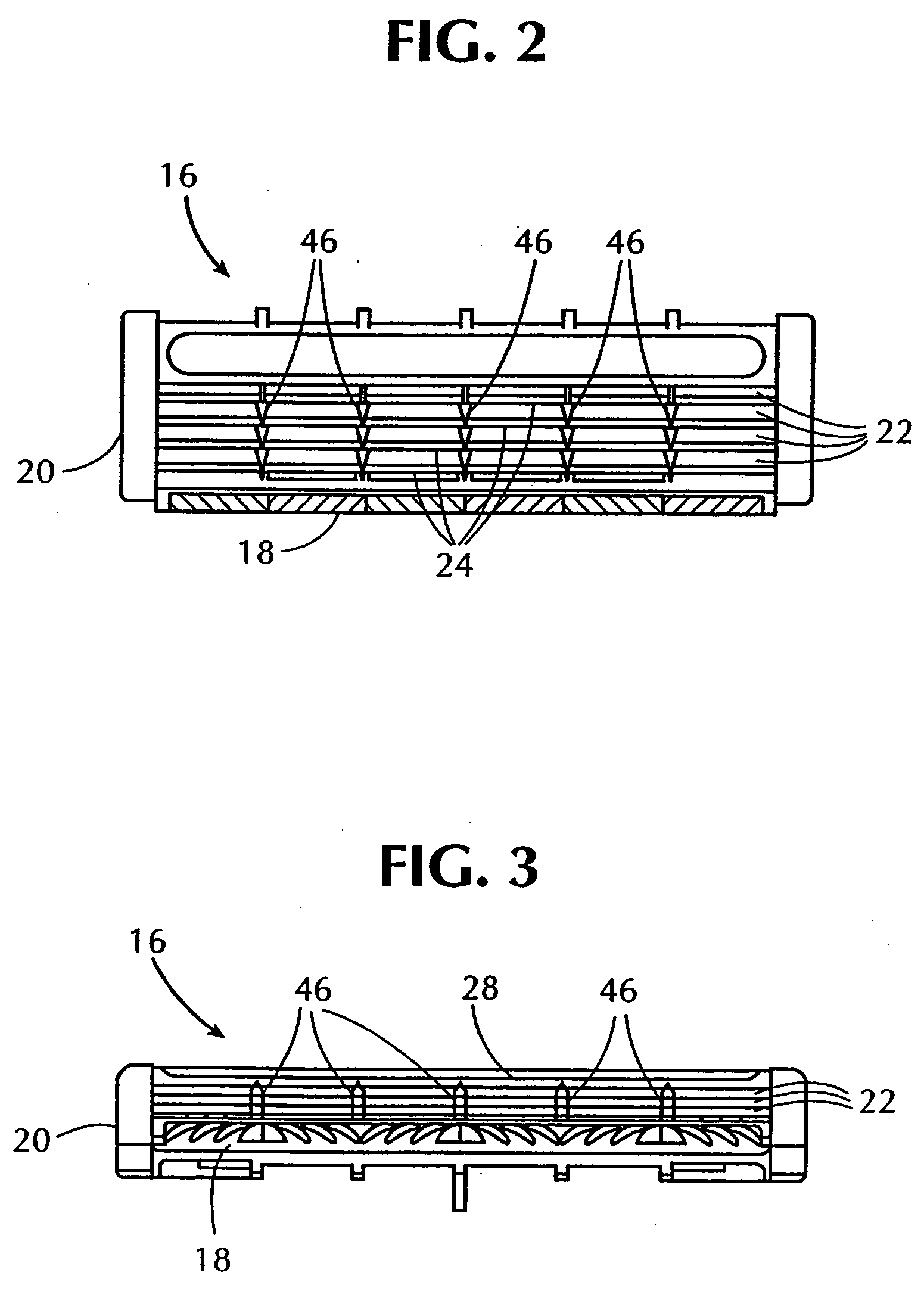Wet shaving cartridge with four blade edges
a technology of wet shaving and blade edges, which is applied in the direction of metal working devices, etc., can solve the problems of increased skin irritation, reduced closeness of the shave possible with a single pass, and increased exposure to substantial positive effects, etc., to achieve the effect of improving performan
- Summary
- Abstract
- Description
- Claims
- Application Information
AI Technical Summary
Benefits of technology
Problems solved by technology
Method used
Image
Examples
Embodiment Construction
[0022] Referring to FIGS. 1-3, a razor assembly 10 (see FIG. 1) includes a handle 12 and head 14 attached to one another. The head 14 can be permanently attached to the handle 12 or it can be removably attached to the handle 12 as a replacement cartridge 16 (see FIGS. 2 and 3). In both instances, the attachment can be rigid or a pivot-type attachment. To facilitate this detailed description, the present invention will be described in terms of a replaceable cartridge 16. However, the present invention can also assume the form of a unitary razor assembly having a handle and a head.
[0023] Referring to FIGS. 2-5, the cartridge 16 includes a guard 18, a frame 20, and four or more razor blades 22 mounted within the frame 20. Each razor blade 22 has a cutting edge 24 that extends along the length of the blade 22. The frame 20 includes a seat 26, a cap 28, and a plurality of spacers 30. The razor blades 22 are disposed between the seat 26 and the cap 28 of the frame 20. The cap 28 includes...
PUM
 Login to View More
Login to View More Abstract
Description
Claims
Application Information
 Login to View More
Login to View More - R&D
- Intellectual Property
- Life Sciences
- Materials
- Tech Scout
- Unparalleled Data Quality
- Higher Quality Content
- 60% Fewer Hallucinations
Browse by: Latest US Patents, China's latest patents, Technical Efficacy Thesaurus, Application Domain, Technology Topic, Popular Technical Reports.
© 2025 PatSnap. All rights reserved.Legal|Privacy policy|Modern Slavery Act Transparency Statement|Sitemap|About US| Contact US: help@patsnap.com



